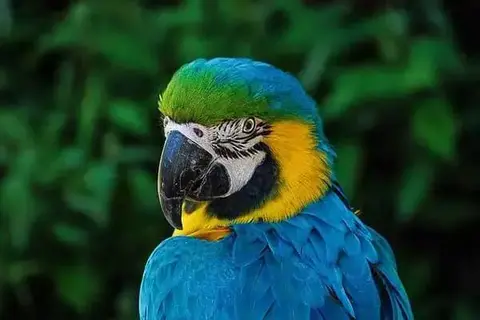50 Interesting And Surprising Facts About Doves
Evelyn StarWe present to you 50 interesting and surprising facts about doves. You certainly haven’t heard these facts about doves before. Doves are not as simple as they seem.
Interesting facts about doves

1.Since time immemorial, the dove has been considered a bird of peace. It is depicted as a monument in more than 30 cities around the world.
2.These are the first birds domesticated by humans. The relationship of mankind with pigeons dates back to the dawn of civilization and probably even earlier.
3.Tame pigeons, also known as stone pigeons, were first depicted in pictographic writing on clay tablets in the Mesopotamian period, dating back over 5000 years.
4.There are over 300 species of these birds on the entire planet Earth. They live in every part of the world except, of course, the coldest areas, but most pigeons also live in the tropics.
5.The doves have been domesticated long ago. When pigeons were domesticated, they were first adapted for the post office because pigeons are very hardy. They were constantly used as postmen over long distances.
6.Famous historical figures such as Genghis Khan, Julius Caesar, and others used them to deliver messages.
7.In the 11th-12th centuries, the pigeon had the same value as a thoroughbred stallion, because there were no mail or phones at that time.
8.Just in ancient times, this bird was a totem animal and a cult object – the patron saint of a man. In Australia, it only patronized women, and men teased the ladies with the carcass of a dead pigeon to annoy them.
9.The cities were dedicated to the birds. The most famous of them was Babylon. Legend has it that the Queen of Semiramis turned into a dove at some point.
10.Christians also consider these creatures to be God’s birds. In the old days, they were placed in the graves of martyrs as a symbol of resurrection.

11.The structure of the body of the dove is quite interesting: its short but firm legs carry a plump body and a small head. The feathers of these birds are hard but smooth. An adult has about 10,000 feathers. The structure of the plumage can invite a strong airflow during flight.
12.Pigeons have different feathers that perform different functions. Some types of doves have feathers of special unusual shape, they help them to fly at very slow speeds.
13.Other types have other feathers that make special sounds in flight. The most interesting thing is that they communicate through these “melodies”.
14.The most important plumage is found in pigeons on their wings and their tail, the fly and helmsman feathers respectively. And another important point: for “insulation”, the pigeons have a layer of thin fatty tissue hidden under the same feathers.
15.Doves see the world in a kaleidoscope of colors. They are known to have extraordinary vision and can distinguish almost identical shades of color. Humans, for example, have a triple system of color perception, while pigeons’ photosensors and light filters can distinguish up to five spectral bands, making the world a virtual kaleidoscope of colors for them.
16.Females and males of most pigeon species are similar to each other, but males are larger and smarter.
17.And some rare species, such as the crowned and Asian fruit pigeon, occupy a leading position among the most beautiful birds on the planet. They are the ones with the brightest signs on the front of their bodies.
18.Doves can use their markings to attract helpers or intimidate other breeders of the same species that threaten them or their territory.
19.The dove was a symbol of resurrection. In Russia murder of a pigeon was cruelly punished as it was considered that the souls of dead people were moved to pigeons.
20.It is interesting that small pigeons somehow hatch strictly till noon, and females lay eggs right after three o’clock in the afternoon.
21.The walls of the goat during the feeding period of the chicks emit the legendary bird’s milk, which looks more like sour cream.
22.The chicks eat in this way: lean their cranberries against Mom Dad’s beak and lick the milk.
23.The day after birth, the chicks weigh twice as much as at birth. About a week later, parents put softened seeds in their baby’s diet, and ten days later, female pigeons stop feeding, but more restless dads spoil their chicks for a few more days.
24.By the way, sports doves show better results just after ten days.
 Photo by Malcolm Lightbody on Unsplash
Photo by Malcolm Lightbody on Unsplash1.The street doves are a little different than the others. They fill their stomachs to the limit, and when there is no room left, the food goes straight to the goiter, which consists of the left and right parts. First, the left side is filled and then the right side is opened. This feature makes them look like hamsters in some way.
2.There is an amazing view of these birds that stands out from the rest, called Birmingham Rollers. They can do flips right on the flight, not even once, but a whole series of them.
3.Scientists can not yet explain why they do such tricks, but many breeders say that rollers just like such actions.
4.There’s another similar breed in nature called a saloon roller. These birds also like to flip, but they only do it on the ground because they can’t fly.
5.Dove feathers come in different colors depending on the species: white, gray, black, multi-colored.
6.In ancient Egypt, for example, pigeons not only acted as postmen but were also eaten.
7.Nicola Tesla loved doves, and he was a genius. In addition to his research in electricity, the famous eccentric inventor had a strong obsession with pigeons. He was known to go to the park daily to feed them, and even took them home when he found the wounded.
8.And one white bird, in particular, won the love of Tesla more than the others and stayed with him as a friend and pet until her death.
9.Why aren’t many pigeons sitting in trees? On poles, cornices, and roofs of buildings, on the ground, on curbs, and even on a man – please, as much as you like. But somehow these city birds ignore the branches of trees, what are the reasons for this behavior?
10.It can be explained by the fact that the natural habitat of our urban doves, the wild ancestors of our urban doves, is rocky mountains. They are homes on the rocks, and concrete buildings and bridges are a suitable alternative for them. In the wild, doves make nests on high rocky cliffs. Tall buildings remind pigeons of natural nesting places.
11.There are species of pigeons that have a home on trees: wahiris in Europe, green pigeons in Africa, many species of doves, and in the tropics.
12.The fact is that doves can sit on trees, but the problem is that there are more buildings than trees in the city. Also, buildings provide a safer place to nest, while trees are often victims of rain and wind. Why pigeons do not nest on trees can be called a common adaptation to change, although it may have caused evolution. But there seem to be quite a few possible reasons for that.
13.The possible reasons why doves do not sit on trees are as follows: in ancient times people used pigeons to send messages through letters. The message was tied to their feet or back and they just flew back to their house.
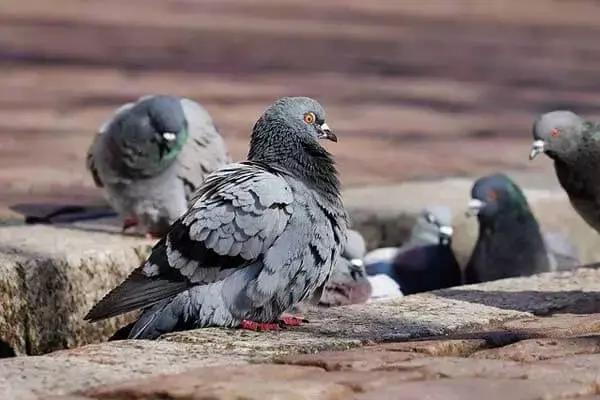
14.There is little possibility that they may have lost muscle strength in their legs during evolution and thus cannot capture branches.
15.There was this wonderful view: a wandering pigeon. Unfortunately, the last of its kind died in 1914. It was all the fault of the Americans, who thought the meat of the birds of this genus was madly delicious, and they started the “pigeon genocide”. American citizens exterminated wandering pigeons: salted in barrels and shipped to numerous shops in the country.
16.Then, of course, the zoologists grabbed up, but it was too late: Martha’s last pigeon died before her date.
17.Picasso also admired pigeons and even named his daughter Paloma after them, which means “dove” in Spanish.
18.As a regular on the street scene, artist Pablo Picasso clearly took great inspiration from the birds at his feet. Pigeons are a frequent subject in his work.
19.In the last century, people brought out many meat species of pigeons, they are considered a delicacy in many countries of the world. The pigeon is almost 6 times more nutritious and fatty than chicken, and three days before birds are fed with juniper berries and dill seeds, thanks to these maneuvers the meat acquires a special flavor.
20.In the past centuries, dove meat was the main dish in almost all peasant families.
21.And in Russia at imperial cooks and masters of noble families even there was a certain point: all, in general, have started to invent every possible food from pigeons as in a meat pigeon contains only 49% H2O, and it six nutritious and more nourishing than chicken. Three days before serving, Russian cooks fed the pigeon with juniper berries and dill seeds, so the “pigeon” dishes had this flavor.
22.Now dove meat is mainly popular in European cuisines: in France, Slovakia, Czech Republic. There are whole mechanized enclosures for 100,000 of these birds. A pair of pigeons bring 10-14 chicks each, so the business is very profitable.
23.The pigeons are also raised for sporting events. The sporting pigeon overtakes the swiftest bird in terms of speed. Sporty Pigeon has a speed of 2 km/minute!
24.DNA researchers say the pigeon is the closest living relative of the now-extinct nonflying Dodo bird.
25.Modern doves in cities are not as afraid of humans as the real wild, and they have adapted to urban life.
Today, about 260 million doves live in almost every city in the world, living and interacting with humans perhaps more than any other animal on the planet.
Fun Facts About Doves
 Photo by Faris Mohammed on Unsplash
Photo by Faris Mohammed on UnsplashDoves are among the world’s most adorable birds, which have many interesting facts. They are small but can reach up to 75 centimeters in length and weigh up to two thousand grams. In addition to their beautiful plumage, they are very sturdy and are among the strongest fliers. Although their size is similar to that of chickens, they are not as prone to accidents as chickens are.
Doves live anywhere from temperate to arctic. They don’t like very cold or hot climates, however. Their natural habitats are moist and woodland. In terms of plumage, doves are similar to pigeons but have a unique shape. Their wing-like structure invites strong airflow, and their feathers are different from those of other birds. They also have special sound feathers, which are shaped like hearts or stars.
Doves have interesting anatomy. Their throats are curved and do not have a gall bladder, which means they secrete bile straight into their gut. They can survive in almost any climate, though they do not fare well in very cold climates. Doves have very long tails, and they’re much smaller than pigeons. And while they’re smaller than pigeons, doves don’t have gallbladders.
Doves are capable of living in any climate, but they don’t fare well in cold or wet conditions. Typically, they prefer warm climates and woodlands, where they can be social with other species. One interesting fact about doves is that, unlike most other birds, they don’t have gallbladders. They secrete their bile directly into their gut. These facts about doves will give you a better understanding of the unique characteristics of this majestic bird.
Do Mourning Doves Mate For Life?
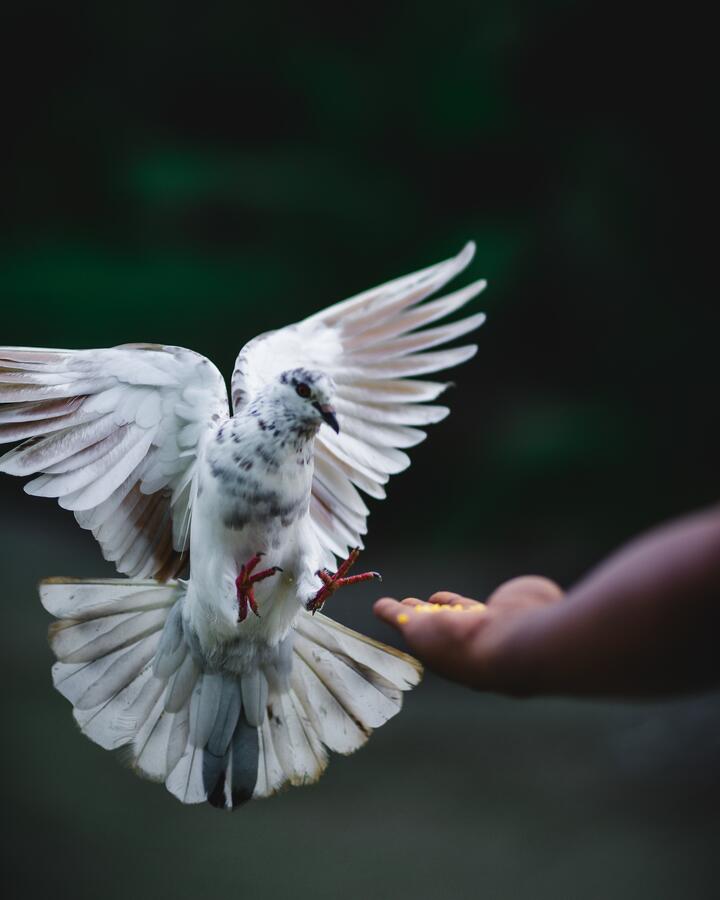 Photo by Javardh on Unsplash
Photo by Javardh on UnsplashDo mourning doves mate for life? This is a question we’re often asked, and there’s some good news. The species is monogamous, and it’s estimated that ninety percent of bird species are monogamous. Some doves mate for life, while others only mate for a season. Unlike pigeons, doves bond with their mates for life and raise their young.
Mourning doves do not grieve the loss of young chicks. They’re too preoccupied with keeping their young alive to mourn their loss. A dead chick would be drained of fluids and wouldn’t be a threat to the remaining chicks. Although most pairs last for life, some do pair up only during mating season. Once a couple starts to nest, they’ll stay together for the duration of the breeding season. They’ll also help care for the young during the winter months. These birds are very vocal and have a distinct call, which is usually mournful. They were once known as the Carolina turtledove and the Carolina pigeon.
Mourning doves usually come to the same nest each year. They don’t migrate much, and once the nest is established, the parents do not migrate far from the nest. Some dove species mate for life. Some species mate only during the breeding season. The majority of pairs remain together for the duration of the breeding season. In the wild, Mourning doves are monogamous.
While most bird species are polygamous, some species of doves mate for a single season. In general, though, doves don’t mate for life. But they do mate for life. This may be surprising to some people, considering that most birds don’t live very long. That means that the doves have short lives and are easily caught by hunters and predators.
Although the males of mourning doves are sexually mature within one year of birth, they still mate for life. They will ring each other and chase rivals away from their nesting area. Mourning doves do not mate for life, but they do mate for a lifetime. Some doves may live for more than ten years. If you’re looking for a long-term companion, remember that they can survive up to seven years with just a single mate.
Mourning doves usually mate for life. They may not stay with the same partner forever, but they often take care of their dead mates, which is a sad situation for humans. Nevertheless, their relationship is a lifelong one, and the doves can live with each other for up to five years. While they may not stay with each other forever, they do live in pairs and form close bonds.
The White Dove Bird
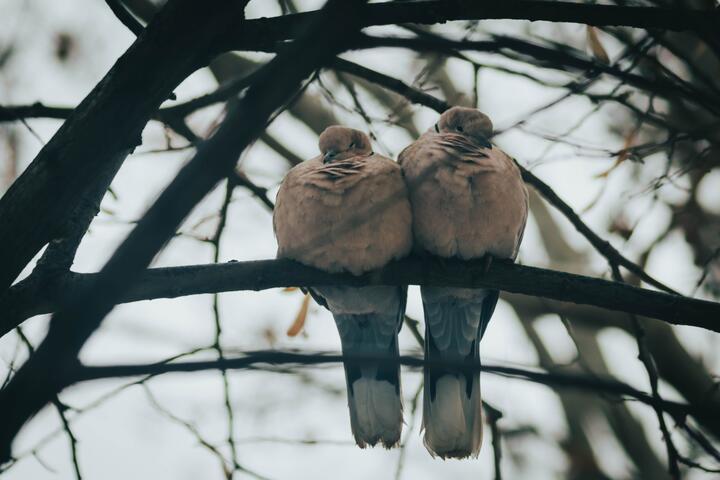 Photo by Stefan Gogov on Unsplash
Photo by Stefan Gogov on UnsplashThe white dove bird is a beautiful symbol of the spirit and can represent deep emotions. It is often a spiritual guide that can help a person surrender to life’s circumstances. It is said that the white dove’s calm and calming presence will help a person achieve greater clarity and a great renewal. This story shows how this beautiful bird can help people heal and find peace. In addition, the white dove is a good reminder to not take things for granted.
The white dove is a beautiful, graceful bird that symbolizes purity and peace. It is the perfect gift for the holidays. It is a symbol of purity, love, and harmony. Although it is a rare breed in the wild, it can be a good luck sign. Despite its name, the white dove is related to pigeons and is related to them. It is also a symbol of hope and peace.
While the white dove is easy to breed, it does not thrive in communal colonies. They need to be kept in a cage all to themselves, even though it may be small. They build their nests with very thin material and should be kept in an open nesting box. If you are a new breeder, this bird should be given their own cage and be well cared for. However, if you plan on keeping them for the long term, it is wise to invest in a large, sturdy cage for them.
The white dove is one of the most popular symbols in the world. Among the most popular types of doves, this bird represents fidelity, love, and peace. Its image is often depicted at weddings. Its appearance at weddings is also a symbol of fertility. Its flight is accompanied by an olive branch, and it represents a peaceful and stable environment. The white dove is a universal symbol, so it should be cherished.
The White Dove is an easy bird to breed. They are not social birds. They do best in their own cage. Their cage can be small and will accommodate their needs. They do not build nests and require an open nesting container. Its flimsy feathers will not make a secure nest. But, white doves do not need to be confined to a cage. If you are looking for a bird that is easy to breed, then you will not be disappointed!
A white dove is an easy bird to breed. This bird is a good choice for those who want a beautiful pet with an incredible personality. While a white dove is a beautiful bird, it can also be a reminder of spiritual messages. In this case, the white dove is a perfect companion for peace and harmony in your life. They are a symbol of love and peace. They have many different meanings.
Did you like interesting facts about doves? Share it with your friends.
- DogsTips For Traveling On The Road With Your Dog

- WildlifeTop 10 Most Dangerous Animals In The WorldBy Amelia B
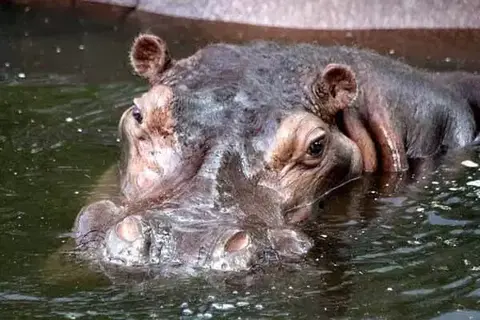
- Wildlife7 Interesting Facts About LlamasBy Amelia B
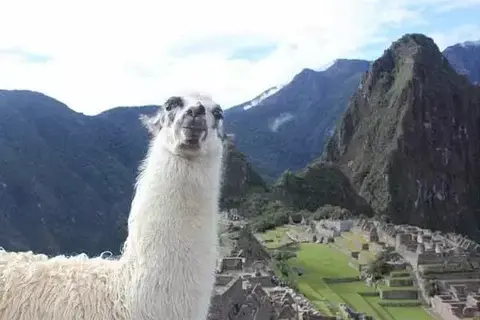
- Wildlife7 Interesting Facts About Arctic FoxesBy Camilo Walker

- Wildlife7 Interesting Facts About ChimpanzeesBy Charlotte Green
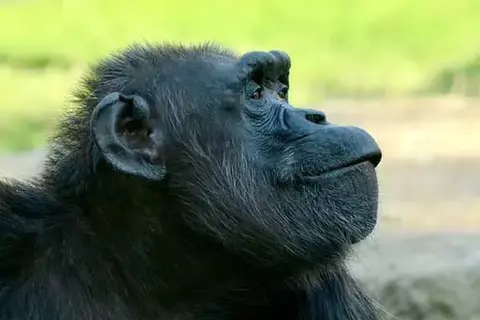
- WildlifeInteresting Maned Wolf FactsBy Camilo Walker
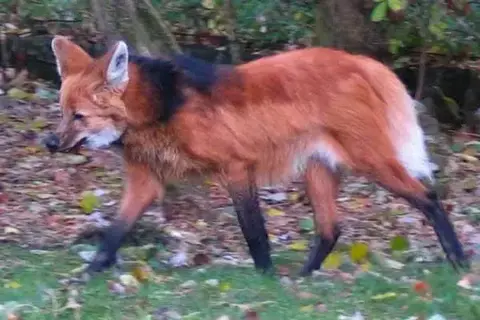
- LivestockPiglets Need A Hugging SpecialistBy Khai Dove
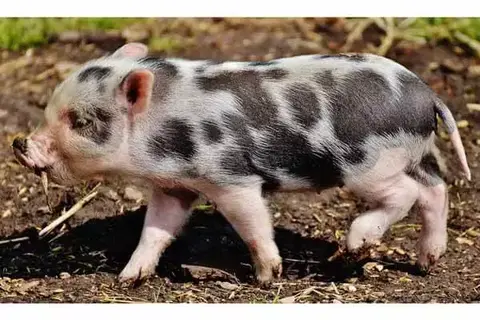
- InsectsWhat Is Habitat For Honey Bees?By Nolan Foster
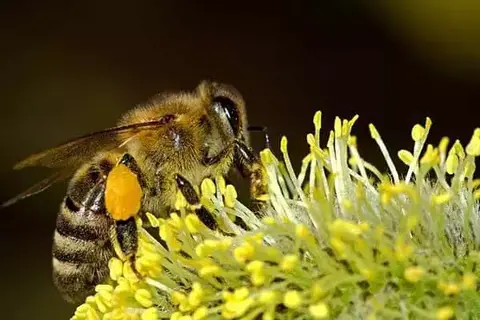
- Birds7 Interesting Facts About SeagullsBy Lucas Torres
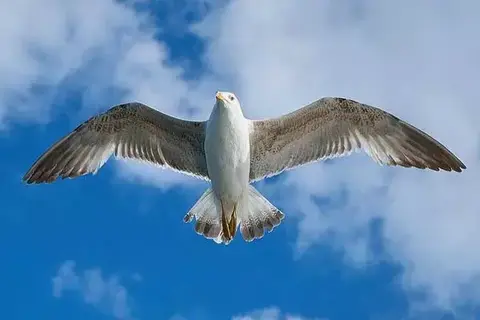
- BirdsWhat Is The Life Expectancy Of A Parrot?By Nolan Foster
